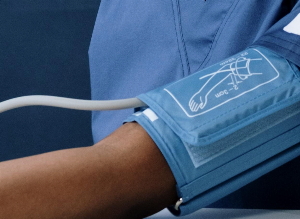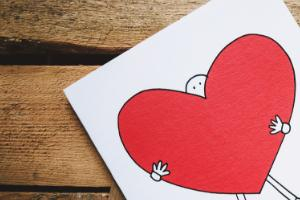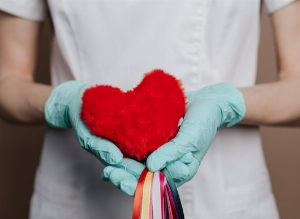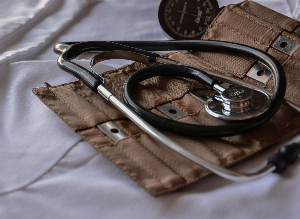World Hypertension Day: Treatments and dietary requirements
Published 17 May 2021 • By Aurélien De Biagi
On the occasion of World Hypertension Day 2021 on 17 May, we thought we would share a brief article about this pathology. Hypertension represents the most prevalent risk factor for cardiovascular disease and provides the primary motive for medical visits in the world. In the UK, there were around 12.5 million sufferers of hypertension in 2015, however this figure is constantly rising.
Do you want to know more about the world's first chronic condition? Do you wish to know about treatments and suitable healthy dietary requirements?
Take a look at our article!

High blood pressure (hypertension): definition
As the heart contracts, it pumps blood through the arteries to deliver oxygen and nutrients to the tissues. In doing so, the blood exerts pressure on the vessel walls. It is this pressure that is measured to assess blood pressure (or tension). High blood pressure is therefore defined as excess pressure of the blood on the artery walls. This then results in more work for the heart, which can lead to over-fatigue and heart failure. In addition, hypertension is a risk factor for cardiovascular disease (heart attack, stroke, etc.) and neurodegenerative diseases such as Alzheimer's. In the majority of cases, its aetiology (causes) remains unknown, we then speak of hypertension as the key concern.
It is measured using two readings: systolic pressure or upper value, which corresponds to the pressure when the heart beats and diastolic pressure or lower value, the pressure on the blood vessels when the heart muscles relax. According to the NHS, ideal blood pressure is considered between 90/60mmHg and 120/80mmHg. A person is considered to be hypertensive when their blood pressure goes beyond these readings, typically 140/90mmHg or higher.
In most cases, high blood pressure is spotted during a routine clinical examination or during an examination for another condition. In fact, hypertension is an insidious and often silent disease (few or no symptoms in some patients).
Healthy dietary requirements
Healthy dietary requirements are crucial in the treatment of hypertension.
First of all, being overweight or obese can contribute to hypertension. Two indicators make it possible to assess these factors: body mass index (BMI) and waist circumference. The former is based on the person's weight and height. If the BMI is greater than 25 we tend to refer to this as being overweight, if it is greater than 30 then we tend to refer to this as obesity. To find out more about these scores, take a look at our article: "Is body mass index (BMI) still relevant?".
Waist circumference, in turn, makes it possible to measure excess fat around the abdomen. Therefore, a waist circumference greater than 94cm for a man or 80cm for a woman is considered to be too high.
In order to effectively reduce body fat, it is recommended to change one's diet and lifestyle habits (or introduce long-lasting changes). This is because fat is formed when our intake of nutrients from food is greater than our needs, the excess being stored as fat. Furthermore, when our intake is inadequate relative to our body's needs, the latter draws on its reserves (fat). To lose weight for example, it is necessary to increase your energy resources by doing physical activity while reducing your intake. This physical activity is even advised for hypertension. While it is true that sport increases blood pressure, it only increases it during exercise (and/or in the minutes that follow) and afterwards, helps keep it lower. A sport can therefore be introduced even among hypertensive patients and will be of benefit to them. Medical recommendations advise walking 30 minutes a day (or equivalent).
Among other things, a diet low in alcohol and salt is recommended. This is because salt causes fluid retention and thus an increase in blood volume (volume of circulating blood) which increases pressure exerted on the artery walls and therefore, blood pressure. According to the recommendations, 5 to 6g of salt per day is enough (one spoon's worth).
The Mediterranean or Cretan diet is advised as well. It is based on a plentiful supply of fruit and fresh vegetables, legumes, nuts, olive oil, fish and some meat (poultry and some red meat). On top of that, a moderate intake of red wine, dairy products and eggs as well as regular physical exercise are set out.
Finally, tobacco smoking is the leading risk factor for cardiovascular disease (stroke, heart attack, aneurysm, etc.) and should be stopped in case of high blood pressure. You can consult with your doctor for help and many replacement therapies exist: nicotine-based such as Nicorette or nicotine-free such as varenicline.
Drug treatment for high blood pressure (hypertension)
First of all, high blood pressure medication should be taken at the same hour every day. In case you forget, do not wait for the next day's intake, the treatment must be taken as soon as possible even if it means moving your next dose. Likewise, if you forget to take it for a whole day, the dose should never be doubled on the following day.
Several groups of drugs are used for treating hypertension. The most widely used are beta-blockers, diuretics, calcium channel blockers, angiotensin-converting enzyme inhibitors (ACEI) and angiotensin II receptor blockers (ARBs or sartans).
Each of these types of drugs operate with different mechanisms but still with the aim of lowering blood pressure. Their effect may influence heart rate, blood volume or decreased resistance. Their effects, however, are not immediate. In fact, there is a delay of approximately 2-3 weeks before blood pressure is regulated.
Beta blockers
This pharmaceutical class will lower blood pressure through its effect of bradycardia (decrease in heart rate) and decrease in myocardial contractility (reduced force of contraction of the heart).
Due to their cardioprotective effects, these treatments are also prescribed for people who have suffered a myocardial infarction (heart attack), are suffering from angina pectoris or have an elevated resting heart rate.
Some examples are: bisoprolol, atenolol, metoprolol, acebutolol, nebivolol, etc.
There are also two types of beta blockers: cardioselective and non-cardioselective. The former act only on beta receptors located in the heart while the latter have an effect on all beta receptors. The latter therefore cannot be taken in combination with certain asthma medications (beta stimulants like salbutamol for example).
The main side effects of these drugs are: fatigue, digestive issues (nausea, etc.), vertigo, erectile dysfunction, cold feeling in the hands and feet, sleep problems and slow heart rate.
Diuretics
Diuretics reduce blood pressure by increasing the amount of water and salt expelled by the kidneys, thus lowering the blood volume and therefore, the pressure exerted on the artery walls. It is a well-known and well evaluated class of drugs.
There are three types of diuretics: loop diuretics, thiazides, and potassium-sparing diuretics. These three families have an effect on the kidneys at different stages. However, they still increase the excretion of salt and water.
Among the diuretics, we can name for example:
- One of the loop diuretics: furosemide
- One of the thiazides: hydrochlorothiazide (often in combination with another antihypotensive, indapamide
- One of the potassium-sparing diuretics: spironolactone
Beware of non-potassium sparing diuretics (thiazide and loop) which can cause hypokalaemia (decrease in the concentration of potassium in the blood) which can have serious side effects.
Calcium channel blockers
These drugs inhibit the calcium intake within the vascular muscle cells. The latter is essential for muscle contraction. They then enable vasodilation of the arteries leading to a reduction in resistance (friction between blood and wall) and therefore a hypertensive effect.
In addition, diuretics are also appropriate for the prevention of angina attacks (angina pectoris).
These include: amlodipine, lercanidipine, verapamil, etc.
Angiotensin-converting enzyme inhibitors (ACEI)
This drug class prevents the transformation of angiotensin I into angiotensin II (a hypertensive hormone produced by the kidneys). In fact, these drugs enable a suppression of the vasoconstrictor effect of angiotensin II. In addition, they also prevent the breakdown of another molecule, causing a tickly cough: the most common side effect of ACEI. They are not appropriate for pregnant women as well. In fact, because of the passage of the foetal placental barrier, they can cause lesions in the unborn child.
In this class, we can find molecules such as: captopril, perindopril, ramipril, enalapril...
Angiotensin II receptor blockers (ARB)
Finally, this last class prevents the connection of angiotensin II to its AT1 receptor, thereby decreasing the contractility of the blood vessels and therefore blood pressure.
They have the advantage of having few adverse effects. Increased monitoring is however necessary for patients with impaired kidney function. Furthermore, their long term effects are less well known than the other older classes. They are however, just like ACEI, not appropriate for pregnant women.
Some examples of drugs belonging to the family of sartans are: candesartan, irbesartan, telmisartan, valsartan...
Was this article helpful to you?
Share your thoughts and questions with the community in the comments below!
Take care!

 Facebook
Facebook Twitter
Twitter



